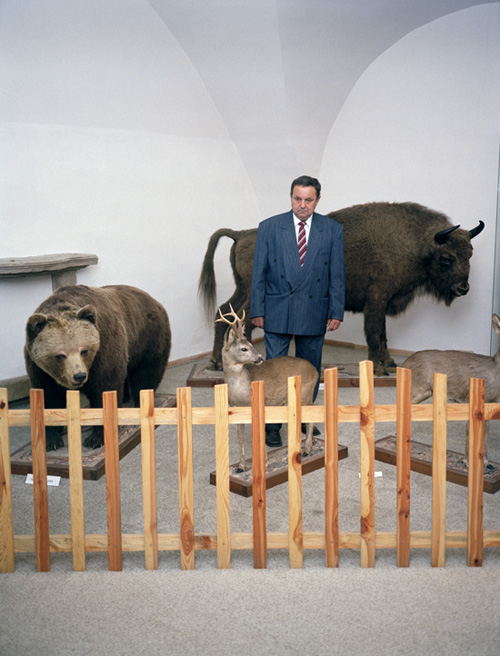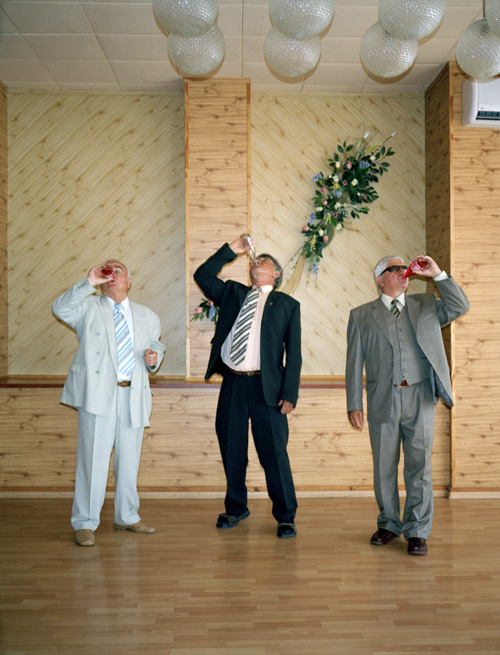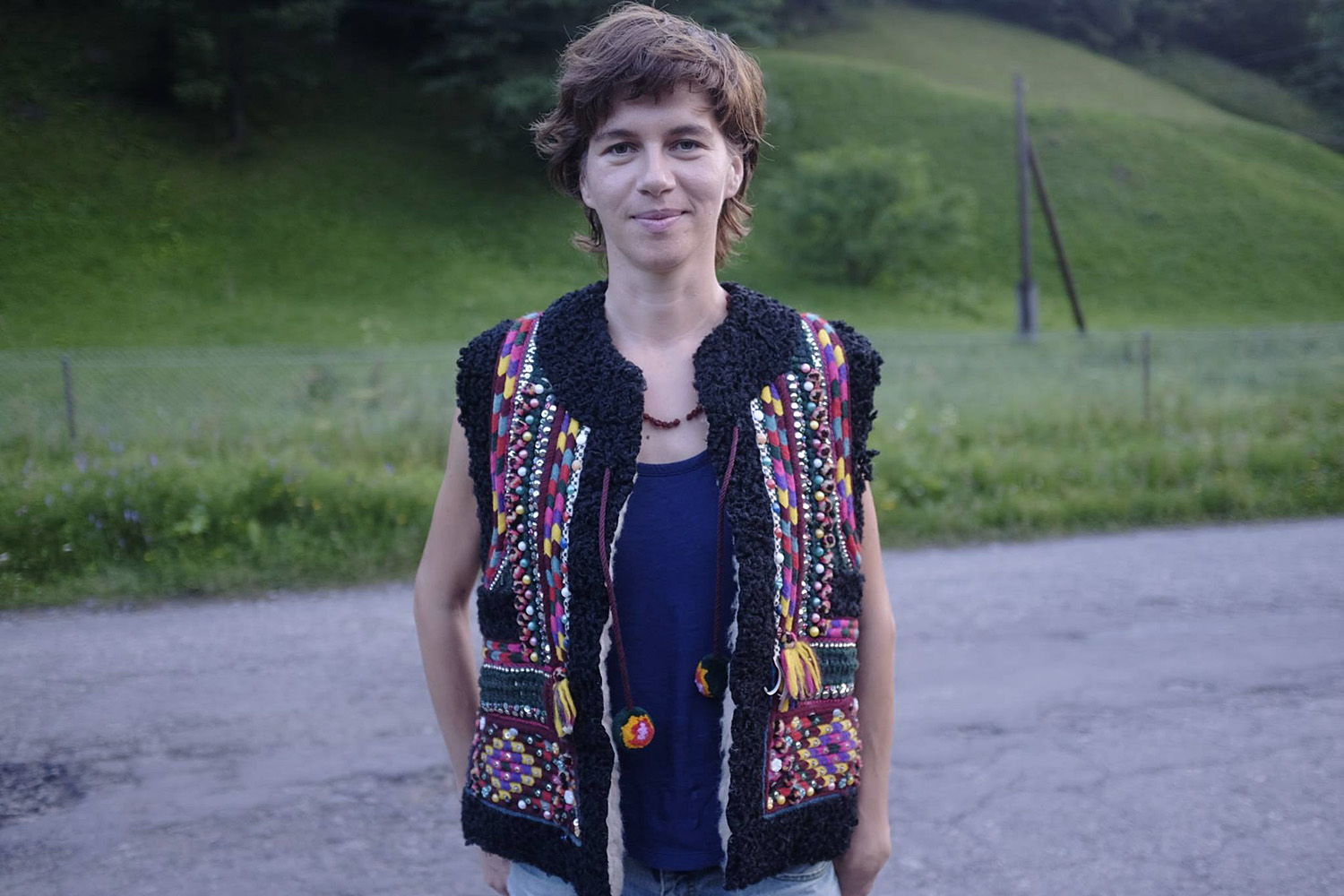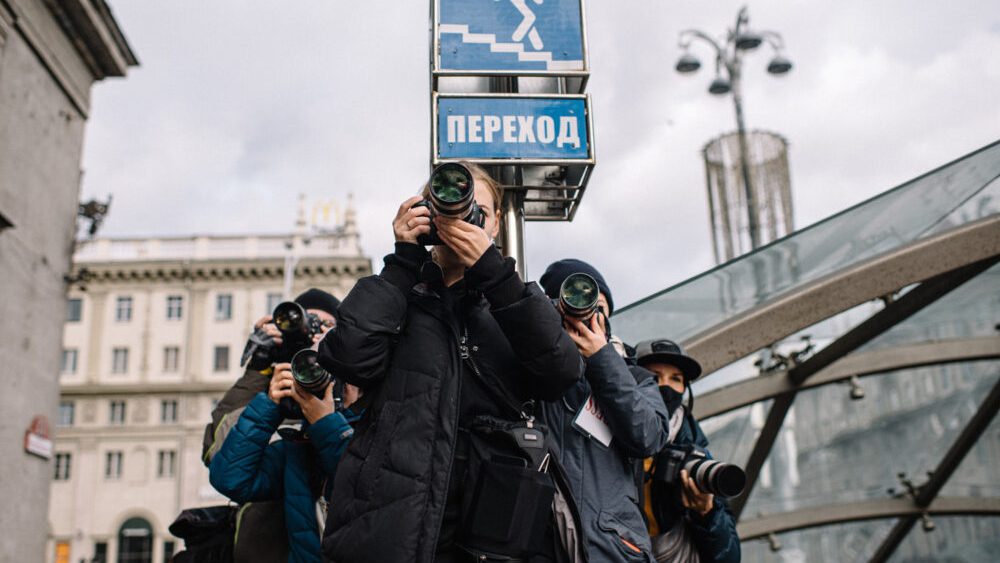Interview with Lucia Nimcova
Work by Slovak artist Lucia Nimcova (1977) will be on view at the Riga Photomonth exhibition Facts and Clarifications from May 10 – 27 at the Exhibition Hall of the National Library of Latvia. The artist is known for her photography and video work, focused on the communist past of her country and its heritage today. She has exhibited widely in Slovakia, the Netherlands, Germany and elsewhere, as well as publishing nine books. In Riga, she will show Unofficial, a project about her native town of Hummene in eastern Slovakia. Combining various archival materials and amateur images of herself as a child with her own photographs and video, Lucia comments on the traces of Normalisation (a repressive ideological programme, aiming to promote the social and political integration of Slovakia as part of Czechoslovakia post-1968) in today’s Slovakia.
Could tell us a bit about the work you will be showing at Riga Photomonth?
I will be showing a small part of my project Unofficial that I did in 2006-2007. The main question I was asking myself while analysing the official archive of my hometown was: “Can a documentary picture, which was commissioned, deform the event it portrays? How?” These pictures fascinate me because of the author’s lack of interest in the work. In these photographs, repetitive events had to be documented and evidenced for the future; today the archives reveal the structure of the symbolic forms of public life.
What turn out to be significant are those moments when personal experience seemingly accidentally penetrates the official scheme. We come to realize that the official reality was comprised of thousands of personal stories; that there was nothing like the “official reality”. I learnt about the archive when I was 18 and wanted to work with it ever since. It became urgent when I realized the character of the past largely defines our present, that history does prevail. I did not use any specific criteria to sort through the material. I started to interpret the photographs and this helped me to understand how to proceed.
I set out to create – to reconstruct, image by image – my own story from a time when I did not yet apprehend the world as a photographer. I selected archives from the town where I grew up, which enabled me to appropriate the photographs with native confidence. I wanted people to became part of the process. I brought them to places where they had been portrayed decades earlier. I simply took them there. I wanted to know how they would respond.
Socialism introduced indifference as our key characteristic. My research convinced me that I come from a social context based on lies, excuses, and slander. This is still true today.

For some reason, in a small town environment, the absurdity of the power-game appears very clearly, for people there do not hold any real power – all they have is a function, a role to play. They make no meaningful decisions about society; they only pose a threat to their staff.
Today, we wear our shiny western faces, proud that we are progressive, but to me, this is normalization still. The brainwashing has prepared us well to take on whatever comes next.
Since 1989, most changes have occurred at the material level: new facades, new cobblestones, new sports stadiums. But community is made by people, by their shared interests and the ways they decide to coordinate them. If facades continue to be the primary subject of our shared interest, what can we expect?
How do you usually get from the idea to the result?
Every piece of work I have created had a very different process behind it, dependent on the topic. I have to understand fully what I want to talk about, and then I search for the forms. Sometimes it could be photography, text, video, or song… that’s never clear in the beginning, even though I often work with photography, because that’s the medium I grew up with and it feels very natural to me. I create my own archive of the images, based on topics I am interested in (Instant Women), or I work with existing archives to talk about phenomenons of the past (Leftovers), or I take photos, just as sketches, to make notes for the future text.
I experiment until I feel I have said all I wanted. In the Unofficial project, after publishing the book, I felt I was missing the important survival humour of the people and I wanted to know what the body could remember, so I made the Exercise video.
Most of your work deals with everyday reality in Eastern Europe, particularly Slovakia. What is the weirdest thing about being Slovakian?
The weirdest thing is that I have a Slovak passport, but I am from the Rusyn minority, who never managed to gain independence, and lives separated by borders, artificially imposed on their territories. For centuries, the mountains where they live were natural borders between western and eastern culture. Their life was heavily influenced by political decisions. Many people who never left their houses lived in four different countries. I was born in Slovakia, but I could very easily be Ukrainian, Polish or Hungarian officially. I feel like an observer, since my village was destroyed in 1985 due to a water dam planned in the area for drinking water, and my whole family was relocated to a typical communist prefab.
My homeland is under the water, but I definitely feel more Rusyn than Slovak… It’s kind of very cold from outside, but very warm inside.

In an older interview you said you are more accepted abroad than in Slovakia. How would you describe the Slovakian photography scene now and where do you see yourself?
I do not know how old that interview was, but that is not a question for me anymore. I do not care who accepts me or not, I just try to make my work as good as possible within the given time and possibilities.
After photography high school in Kosice, Slovakia, I studied in the Czech Republic since I was 18. I needed distance. It was my decision at a very early age. I continued in Amsterdam and many other places around the world. I knew that I am a stranger from nowhere. It was better for me to learn things in an international context, where many people share the same story. I do not follow any trends; I simply do what matters to me.
I am not a specialist in the Slovak photography scene. I know many works of my friends. I have exhibited most often with Martin Kollar, who used to be my very good friend when living in Slovakia in 2000 – 2006, and I do workshops, where I try to help young people with their own works. I love to see them, through their own pictures.
I see myself wherever my topics are, or when my experiences could be useful.

What are you working on now?
Since 2014, I have gathered an archive of photography, video and sound recordings from throughout western Ukraine. As opposed to traditional documentary practices, I prefer to describe the work as a folk opera: a collection of songs, stories, music, performance and field recordings, existing somewhere between an ethnographic document and musical theatre.
Throughout history, traditional music and culture has been appropriated and misrepresented; presently in Ukraine, patriotic songs play an important role in fuelling a populist romantic nationalism. In contrast, I seek to capture official, private and hidden realities within communities that are excluded from the main historical narrative of the region. My main interests are songs that describe – in tragic, brutal and comic ways – domestic abuse, murder, conflict, sex, love and hate. I want to show that the alternative folklore of the region – hard mountain rap, vintage feminism and filthy Karpaty hip-hop – is still alive and relevant, before its last inheritors disappear.
Khroniky follows on from my previous work on both the female experience in Eastern Europe and the contested histories of my native Rusyn minority. This work similarly seeks to show how the past influences the present. In the end, it is an attempt to navigate the polyphony of subjectivities in the context of Ukraine’s unstable situation ¬ currently and historically.



